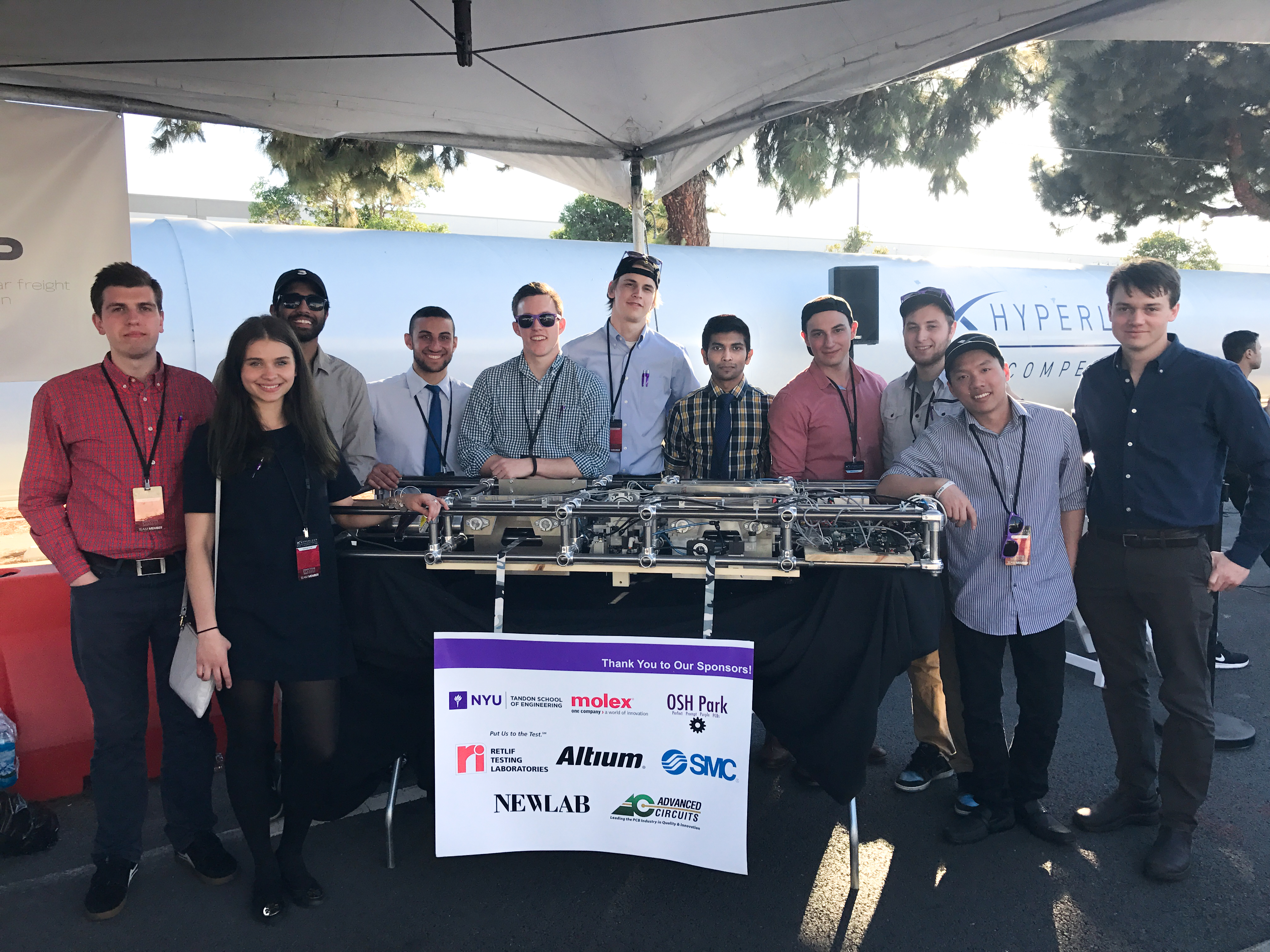Subjected to a battery of tests in vacuum conditions with air pressure 1/1,000th that of the world outside, the NYU Tandon team passed successfully and got the green light from SpaceX organizers to go to this summer’s hyperloop competition.
Last month, the team of undergrads, grad students and one recent alum trekked from Jay Street in Downtown Brooklyn to Hawthorne, Calif., to take part in a national student hyperloop competition put on by Elon Musk’s SpaceX.
“It was really amazing. There were us and 27 other teams and it was a little over week we were there for,” team captain Benjamin High said by phone recently. “We had a tent we had our equipment. For a full week we were doing a lot of integration: tests, wiring and coding.”
The hyperloop is an idea Elon Musk publicly discussed in 2013. It’s an idea for how to achieve super efficient transportation and its principles are that you create an environment with as little friction as possible: A train placed inside a tube where all the air molecules have been pumped out so there’s nothing to bang against it and slow it down. But as Musk was working on two enormously ambitious companies at the time — Tesla and SpaceX — he didn’t have the hours to devote to devising a hyperloop system. So instead he published his vision in a now-famous white paper and challenged the world to come up with something cool.
That’s why the Tandon team was out there this past month, putting their model up against those from nearly 30 other schools. Their model does have have wheels, which, counterintuitively might make it more successful than those without. That’s because the Tandon team is playing a pragmatic angle, situating their model for adoption more by the shipping industry than for human transportation.
“When implementing an entirely new transportation system there’s going to be a lot of testing, government restrictions and [the development of] a legal framework,” High explained. “You’re going to have a lot of issues if you’re trying to put people in that right away. In the interim, the best business idea would be to transport freight.”
A lot of other hyperloop pods would have to be more like plane cabins, pressurized, intricately designed. One that’s designed to haul boxes could do without a lot of that stuff.
Trucks move 70 percent of the country’s freight, at a cost of $726 billion, according to the American Trucking Associations, all of which are driving and degrading public roads, burning diesel fuel and limited to speeds less than one tenth of what Musk envisions for the hyperloop. That would be, in Valley parlance, a big industry to disrupt. Could the hyperloop make all that sound anachronistic?
“In 15 to 20 years I hope there is, somewhere in the world, a self sustaining system that’s making money for someone. It’s a great way to reduce some emissions but it has to pay for itself somehow,” said High, ever the realist. “In 15 years, if we can get some longer routes built it would be great to see systems where people are hauling freight. The biggest benefit would be if we can take a lot of diesel trucks off the road and instead of burning fossil fuels to move that freight, you could have clean power that provides energy to the hyperloop systems.”
Join the conversation!
Find news, events, jobs and people who share your interests on Technical.ly's open community Slack

